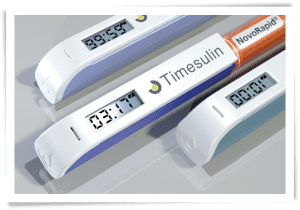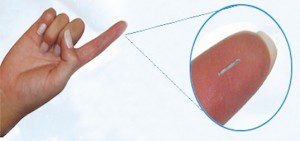 Dr. Neal Barnard, president of the Physicians Committee for Responsible Medicine (PCRM) and author of “The 21-Day Weight Loss Kickstart,” believes that many of our modern-day problems such as obesity and diabetes can be traced to the high concentration of animal products and dietary fat to which we are exposed. A known author on vegan nutrition and vocal opponent of the high-fat Atkins diet, Dr. Barnard has been encouraging individuals to reduce their dependence on animal products and fat. With over two million books sold, Dr. Barnard is an often-quoted figurehead in the vegan community.
Dr. Neal Barnard, president of the Physicians Committee for Responsible Medicine (PCRM) and author of “The 21-Day Weight Loss Kickstart,” believes that many of our modern-day problems such as obesity and diabetes can be traced to the high concentration of animal products and dietary fat to which we are exposed. A known author on vegan nutrition and vocal opponent of the high-fat Atkins diet, Dr. Barnard has been encouraging individuals to reduce their dependence on animal products and fat. With over two million books sold, Dr. Barnard is an often-quoted figurehead in the vegan community.
Dr. Barnard’s newest book is called “The 21-Day Weight Loss Kickstart,” and it’s based on the principles that the doctor has been promoting for years: switching to a plant-based diet and cutting out cooking oil, which Dr. Barnard claims will boost metabolism, reduce cholesterol, fight diabetes, and offer a slew of overall health benefits. The book is a 21-day guide to switching to a plant-based diet, offering recipes and tips for making the transition.
“The 21-Day Weight Loss Kickstart” is focused on making long-term, healthy changes to one’s dietary lifestyle. The diet isn’t concerned so much with counting calories or cardio as it is with simply eating healthy foods all the time. “If you look at other diets, they’re very short-term and artificial. If you go on the Atkins diet, which says don’t eat any fruit, no pasta, no cookies, no bread, it’s not realistic and it’s not healthy,” says Dr. Barnard. “Or if you go on a starvation regimen of eating just 800 calories a day, you just can’t [sustain that], and the weight inevitably comes back. But if you’re eating truly healthful foods, you don’t need to limit calories, carbohydrates or portions, and it becomes a one-way street towards weight loss.”
The vegan diet isn’t just good for reducing obesity, according to Dr. Barnard. He believes that it’s also an effective tool in fighting obesity and metabolic disorders such as diabetes, and that diabetes is caused by small amounts of dietary fat that build up in muscles and reduce the effect of insulin. “…the people who are the slimmest and live the longest and have the least occurrence of diabetes are people who are basing their diets on plant foods,” says Dr. Barnard. “In our research studies, it really does improve people’s diabetes, blood pressure and cholesterol. When it comes to diabetes, it’s fairly simple. The cause of type 2 diabetes is microscopic amounts of fat that build up in the muscle cells and stops insulin from working.” Since the plant-based diet advocated by The 21-Day Weight Loss Kickstart contains very little fat, any fat remaining in the muscle cells will “drain out” and allow glucose to enter the muscle cells where it can be used for energy, causing blood sugar levels to fall.
Dr. Barnard’s carbohydrate-heavy recommendation for a healthy diet might seem strange to most diabetics. In his description of a typical day’s diet, he describes eating several pancakes with syrup for breakfast then salad and pasta for dinner.
The 21-day diet plan is effective because it’s a long enough period of time for dieters to begin seeing the benefits of the plan. Beyond weight loss, Dr. Barnard says dieters could expect to see lowered cholesterol and blood pressure, increased energy, and increasing interest in the vegan diet as the days pass.
 Amylin Pharmaceuticals, a biopharmaceutical company based in San Diego, CA, recently announced the results of clinical trials of its new
Amylin Pharmaceuticals, a biopharmaceutical company based in San Diego, CA, recently announced the results of clinical trials of its new  New research shows that there may be a good reason why you should chew your food thoroughly. According Masaaki Eto, M.D., a professor of clinical pharmacology and medicine with Ohu University in Koriyama, Japan, thoroughly chewing food stimulates the release of two intestinal peptides that serve a function in lowering appetite and reducing food intake in obese individuals. Dr. Eto presented the findings of the research at the 47th annual meeting of the European Association for the Study of Diabetes (EASD).
New research shows that there may be a good reason why you should chew your food thoroughly. According Masaaki Eto, M.D., a professor of clinical pharmacology and medicine with Ohu University in Koriyama, Japan, thoroughly chewing food stimulates the release of two intestinal peptides that serve a function in lowering appetite and reducing food intake in obese individuals. Dr. Eto presented the findings of the research at the 47th annual meeting of the European Association for the Study of Diabetes (EASD). Timesulin, a new product for use in managing insulin-dependent diabetes was debuted at the 16th annual meeting of the Foundation of European Nurses in Diabetes, or FEND, in Lisbon, Spain. The product uses a timer to remind diabetics when it’s time for another
Timesulin, a new product for use in managing insulin-dependent diabetes was debuted at the 16th annual meeting of the Foundation of European Nurses in Diabetes, or FEND, in Lisbon, Spain. The product uses a timer to remind diabetics when it’s time for another  Team Type 1, an international sports organization promoting diabetes awareness around the world, announced recently that ten runners from the organization’s world-class athletic program will be embarking on a 3,000 mile run across the United States. Supported by international pharmaceutical company SANOFI, which sponsors Team Type 1’s racing teams — which are composed of over 100 athletes — the run is designed to promote a message of improved health through proper diabetes management methods, through increasing awareness of the growing problem of diabetes in the U.S., and through the
Team Type 1, an international sports organization promoting diabetes awareness around the world, announced recently that ten runners from the organization’s world-class athletic program will be embarking on a 3,000 mile run across the United States. Supported by international pharmaceutical company SANOFI, which sponsors Team Type 1’s racing teams — which are composed of over 100 athletes — the run is designed to promote a message of improved health through proper diabetes management methods, through increasing awareness of the growing problem of diabetes in the U.S., and through the  The International Diabetes Federation recently released new estimates about the number of people affected by diabetes. According to the IDF, there are 366 million people around the world living with diabetes; the disease also kills one person every seven seconds. The IDF stated that the immense pressures that diabetes places on healthcare systems should encourage world leaders to take a more active role in treating and preventing the disease.
The International Diabetes Federation recently released new estimates about the number of people affected by diabetes. According to the IDF, there are 366 million people around the world living with diabetes; the disease also kills one person every seven seconds. The IDF stated that the immense pressures that diabetes places on healthcare systems should encourage world leaders to take a more active role in treating and preventing the disease. New research shows that neither intake of vitamin D nor circulating levels of 25(OH)D are associated with increased risk of islet autoimmunity (IA) or the development of Type 1 diabetes in young children. The findings appear to be at odds with earlier research, which contradicted the conclusions of the study. The study was published in the journal Diabetologia.
New research shows that neither intake of vitamin D nor circulating levels of 25(OH)D are associated with increased risk of islet autoimmunity (IA) or the development of Type 1 diabetes in young children. The findings appear to be at odds with earlier research, which contradicted the conclusions of the study. The study was published in the journal Diabetologia. Amelia Lily, the 16-year-old Lady Gaga fan who performs on the British television talent show X-Factor, seems bound for stardom. She recently gave a performance of Janis Joplin’s Piece of My Heart which had one judge saying, “That was amazing. You blew up the stage.” The judge added, “People work their whole lives and take forever to get to the level that you are at now, you’ve come on that stage so much older than your years.” X Factor is a singing talent show created by Simon Cowell, who also created American Idol.
Amelia Lily, the 16-year-old Lady Gaga fan who performs on the British television talent show X-Factor, seems bound for stardom. She recently gave a performance of Janis Joplin’s Piece of My Heart which had one judge saying, “That was amazing. You blew up the stage.” The judge added, “People work their whole lives and take forever to get to the level that you are at now, you’ve come on that stage so much older than your years.” X Factor is a singing talent show created by Simon Cowell, who also created American Idol. Sensors for Medicine and Science announced that its implanted continuous glucose sensor, which the company is currently developing, has demonstrated highly accurate results. The sensor tracked glucose levels in study participants with a 77.6% accuracy in the A zone of the Clark Error Grid and a 19.2% in the B zone of the grid, resulting in a mean absolute difference of 12.2%. It is the first time an implant-based sensor has achieved such accuracy. The study also achieved the goal of continuous sensor use in patients for over six months.
Sensors for Medicine and Science announced that its implanted continuous glucose sensor, which the company is currently developing, has demonstrated highly accurate results. The sensor tracked glucose levels in study participants with a 77.6% accuracy in the A zone of the Clark Error Grid and a 19.2% in the B zone of the grid, resulting in a mean absolute difference of 12.2%. It is the first time an implant-based sensor has achieved such accuracy. The study also achieved the goal of continuous sensor use in patients for over six months.